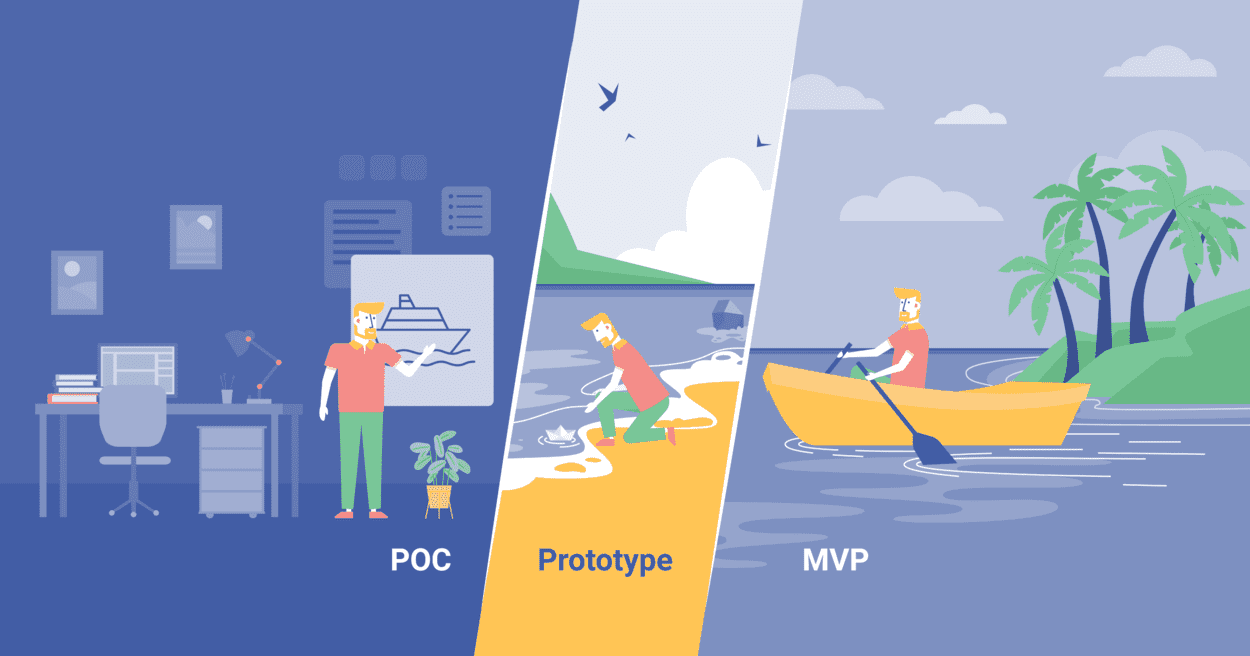According to a recent study by CB Insights, the #1 reason why startups fail is a lack of market need. This was shown to be the case in approximately 42 percent of all surveyed businesses. The great lesson here, of course, is that as an aspiring entrepreneur, you must always be careful to not put out there something that consumers simply have no appetite for — but how can you be so sure?
Well, if you’re a regular blog reader, you probably know that an MVP, or minimum viable product, is an excellent way to gauge the market readiness of your product, but this is where things can get a little confusing. After all, how does this differ from a prototype, or even a proof of concept (POC)? Though competing terms like “POC vs Prototype vs MVP” will often get thrown around by techy developers all the time, deciphering what they actually mean can often be a real challenge.
A Shift in Focus: POC vs Prototype vs MVP in Practice
Because at the centre of every company is a problem that must be solved or a need in the market that we are trying to address, instead of focusing on the product itself, it is helpful to see POCs, prototypes and MVPs as logical steps along the path to market readiness.
Proof of Concept
First comes the Proof of Concept (POC). In software development, this is an often used technical exercise to show that your product is actually feasible. Your POC will be used to garner support from stakeholders as well as potential investors, but should not be seen by your target consumers. An example of a POC could be a simple verification that your chosen technologies are able to work together, performing the tasks that your business needs them to do. Or in other words, it is a simple “yes” or “no” answer from developers that can give entrepreneurs a helpful boost by proving that their startup idea is technically achievable.
Spike Solutions
Sometimes, the idea may seem too innovative, or the approach — too risky, and investments required to develop even a PoC may look significant. In such cases, in order to reduce the uncertainty, minimise technical risks, and validate approaches, a “spike solution” can be used. This is a series of small R&D experiments that help answering key questions without investing too much time and effort.
Prototype
Next up is the prototype. While the POC tells us whether or not a solution can be developed in the first place, the prototype is a model of the system which shows us just how the product will be done, used and even what it will likely look like. At SPG, we make use of the Agile practice of rapid prototyping, which through simple sketches and successive trial and error, allows us to quickly devise the user experience that your company have in mind.
MVP
Finally, it is time to create the minimum viable product. Unlike everything that has been done so far, the MVP is a fully functioning and market-ready solution that is purposefully built with early adopters in mind. For this reason, it consists of only the bare minimum of features that are needed to do what your product sets out to do.
As briefly touched upon, the main purpose of an MVP is to learn which features, interactions and experiences are actually in demand, as opposed to simply relying on what you think might be the case. This is very useful in prioritising requirements and preventing unnecessary bloat, as from here, you can gradually build your product up to create a better, more polished UX.
Conclusion
While many companies do indeed fail miserably, at SPG, our commitment is to help you succeed. By focusing on the need of the market as opposed to the ambitiousness of your idea, you will find that whether you develop a mobile, web app or even a VR experience, in reality, it doesn’t really matter — as long as you are solving your customers’ actual problems. This, of course, is where the methods described above will truly come in handy.



